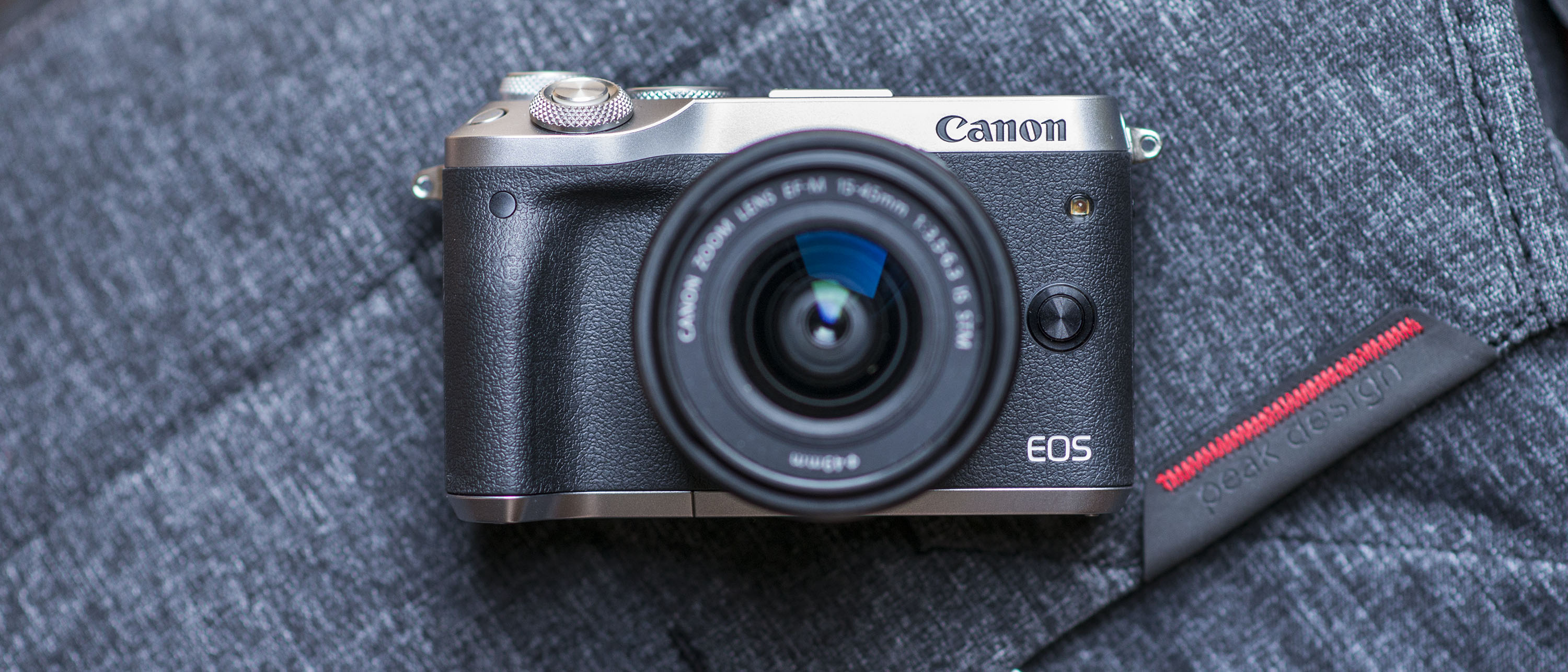TechRadar Verdict
The Canon EOS M6 isn't quite specified up to the standard we’d expect for a camera with such a price tag, but it's a sound all-round performer and perfectly good choice for EOS M and EOS M10 users looking for something a little more powerful.
Pros
- +
Plenty of direct control
- +
Compact and lightweight
- +
Very good autofocus system
- +
Great operational speeds
Cons
- -
Better build quality expected at this level
- -
No integrated viewfinder
- -
No 4K video recording
- -
No electronic shutter option
Why you can trust TechRadar
The successor to 2015’s EOS M3, Canon’s EOS M6 arrives with a handful of features inherited from its relatively new big brother, the flagship EOS M5. The two share similar intentions and are aimed towards a similar kind of user, but with a slightly pared-down feature set, the EOS M6 arrives with a more appealing price tag.
Canon may have got off to a slow start with its mirrorless line, but it's made up for this in recent years. It now has four models in its EOS M portfolio, covering the full spectrum from beginner to enthusiast. This model in particular appears to be well suited to anyone who cut their teeth on the original EOS M or EOS M10.
That said, it’s launched into a very competitive market. Price-wise it not only goes up against a slew of well-regarded models from other manufacturers, but also older, more advanced cameras whose age has allowed them to fall to temptingly low prices.
The former camp includes Fujifilm’s X-T20, Sony’s A6300 and Panasonic’s Lumix GX8, while in the latter there’s the Olympus OM-D E-M5 Mark II and Fujifilm X-T1 Graphite Silver among others. You can even buy a full-frame Sony A7 kit for just a little bit more.
Features
- APS-C CMOS Sensor, 24.2MP
- 3.0-inch tilt-angle touchscreen, 1,040,000 dots
- 1080p video capture
Like the EOS M5, the EOS M6 has been furnished with a 24.2MP sensor designed with Canon’s Dual Pixel CMOS AF technology.
This allows the camera to perform full-time phase-detect AF to help keep focusing fast, as well as nice and smooth when recording video, and is one of the main changes from the older 24.2MP sensor inside the EOS M3, which offered Canon’s alternative Hybrid CMOS AF III system.
The sensor works with Canon’s DIGIC 7 processing engine, which is said to provide better subject detection and tracking over the previous DIGIC 6 engine. Another thing it allows is 9fps burst shooting, which drops to 7fps with continuous autofocus enabled, and the camera joins many other recent EOS models in allowing raw files to be processed in camera post-capture.
Sensor: 24.2MP APS-C CMOS
Lens mount: Canon EF-M
Screen: 3.0-inch tilt-angle touchscreen, 1,040,000 dots
Burst shooting: 7fps
Autofocus: 49-point AF
Video: Full HD 1080p
Connectivity: Wi-Fi, NFC and Bluetooth
Battery life: 295 shots
Weight: 390g
The EOS M6’s LCD screen is competitively specced, measuring three inches in size and bearing 1.04 million dots. It’s touch-sensitive and tilts downwards over a 45-degree angle, although you can also pull it right round to face the front. Unlike the flagship EOS M5, the EOS M6 doesn't incorporate an electronic viewfinder, although you can use one of two external models – either the tilting EVF-DC1 or the newer, fixed EVF-DC2 – by slipping them into the hot shoe.
While a number of rivals are offering 4K video recording at this level, Canon has opted for Full HD video at frame rates up to 60p instead. This may disappoint some, although the presence of Canon's Dual Pixel CMOS AF system and a touchscreen that can be used to adjust focus during recording, together with the further option of using an external microphone, mean it’s still worth considering if video is your thing.
If there’s one area where the EOS M6 shines it’s connectivity options
The fact that you can flip the LCD all the way around to face the front also means this camera is likely to appeal to vloggers, while the inclusion of five-axis digital image stabilization when recording video should help keep things a little steadier if you tend to shoot footage while moving around.
Image stabilization for stills is not provided through the body, but via compatible lenses equipped with their own stabilization systems. If, however, such a lens is used when recording video, the two systems combine to provide a Combination IS system.




If there’s one area where the EOS M6 shines it’s connectivity options. Wi-Fi, NFC and Bluetooth are all present, with the latter meaning you can keep the camera hooked up to your smartphone at all times.
Canon claims you can get around 295 frames per charge from the EOS M, regardless of whether you’re using the LCD screen or a separate viewfinder. You can, however, boost this figure to around 425 frames by enabling the Eco mode in the menu system – when you do so the camera's screen will darken and turn off more quickly than normal when the camera isn't being used.
Everything is recorded to SD, SDHC or SDXC media, with support for the UHS-I standard.
